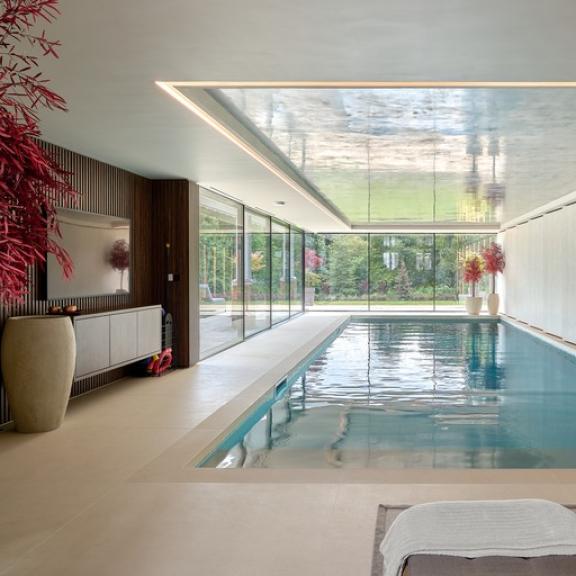Q&A: Dr Wei Yang
Dr Wei Yang, new chair of the Construction Industry Council and the first woman in the role, talks to us about her goals for her term of office

Dr Wei Yang was inaugurated as chair of the CIC (Construction Industry Council) on 29 June 2023, when she began her two year term of office. She is both the first woman chair, and the first chair born outside the UK and Ireland.
Dr Yang is a town planner and urban designer who is renowned internationally. She has extensive experience of leading multi-disciplinary teams and implementing large scale regeneration and low carbon master planning projects both in Britain and around the world. She is a thought leader and advocate for climate actions, nature-based solutions, health and well-being, and social equality. She is chairman of Wei Yang & Partners, and a keynote speaker, author, and scholar.
We asked Wei about chairing the CIC, the role of interior design within the construction industry, and the challenges built environment professionals are tackling.
What are your goals during your term of office?
During my two year term as the chair of the CIC, my primary goals are centred around addressing the urgent challenges facing the construction industry.
The responsibility of our sector extends beyond constructing physical objects; we are here to make our living environment imbued with empathy, inclusivity, and creativity. Our living environment has a direct influence on our daily activities, health, and well-being. It contributes to 40 per cent of global energy-related greenhouse gas emissions, over 33 per cent of global final energy use, and consumes nearly half of the world's natural resources. The construction industry should not be a part of the problem; we should be part of the solution. We need to treat climate, biodiversity, and human society as coupled systems. By collaborating with natural environment professionals, we can play a proactive role in delivering place-based solutions to tackle the grand challenges.
This year marks CIC’s 35th anniversary. Started in 1988, CIC was established by five founding members: IStructE, RIBA, RICS, the Chartered Institute of Building (CIOB), and CIBSE. Currently, CIC unites 35 professional bodies and other significant organisations in the built environment industry in the UK. Our combined membership comprises over 500,000 individual professionals. I am proud that CIC members cover the whole supply chain of the construction industry and to have the British Institute of Interior Designers as our member. Together, we are stronger! As chair of CIC, I want to convey a message – our CIC – that CIC belongs to all of us.
As chair of CIC, I will dedicate my efforts to strengthening cross-disciplinary collaborations between built and natural environment professionals. I am also committed to championing an interdisciplinary future for built and natural environment education and training. It is estimated that 85 per cent of the jobs that today’s learners will be doing in 2030 have not been invented yet, and we should be at the forefront of shaping the future of our profession. In addition to incorporating future technologies, enhancing equality, diversity, and inclusivity in the sector is crucial. My inauguration as the first female CIC chair in its 35 year history marks a new milestone for the industry in becoming more diversified. I look forward to collaborating with BIID and all like-minded organisations and individuals to achieve our shared vision of creating a better future for everyone.
As the first woman chair of the CIC do you think your appointment represents evolution within the construction industry?
Yes! It reflects a broader movement towards breaking down gender, race and age barriers and fostering a more inclusive and diverse industry that can better address the complex challenges we face. While there is still an enormous amount of work to be done, it sets a positive precedent and encourages more women to pursue leadership roles within the sector. My personal journey reflects the changing landscape where women are increasingly taking on leadership roles in traditionally male-dominated fields. I hope to inspire more women to pursue careers in the construction industry, contributing their unique perspectives to shape the industry’s future.
BIID is a member of the CIC. Can you comment on the position you see interior design as having within the construction industry?
Interior design is an integral part of the construction industry and plays a crucial role in shaping the sustainability of built environments. Interior designers contribute to creating spaces that enhance the quality of life for occupants. The innovative approaches of interior designers can significantly impact the success of construction projects by ensuring that spaces are not only functional and beautiful, but also inclusive and sustainable. I see interior designers as key contributors to achieving net-zero carbon emissions and promoting health and well-being in the built environment.
What contribution do you see interior design making within the construction industry in terms of achieving net zero?
Interior design has an important role to play, for instance, interior designers have unique expertise to specify sustainable interior materials and finishes that have a lower carbon footprint; design energy-efficient lighting and HVAC systems that reduce energy consumption; incorporate passive design principles to maximise natural lighting and ventilation; and advocate for the repurposing and adaptive reuse of existing materials, fit-outs, equipment, and structures.
And how important are interior designers in creating a living environment that promotes health and wellbeing?
I deeply value the role of interior designers, they are vital in creating a living environment that promotes health and well-being. They focus on elements such as ergonomic design, air quality, natural lighting, biophilic elements, and material selection, all of which directly impact the mental and physical health and well-being, aesthetics, inclusivity, and accessibility of the occupants and the building.
By a large majority interior designers are women. However, many other professional bodies, research organisations and specialist business associations represented by the CIC are historically male dominated. How have you seen this balance changing over time, and what effects does this have?
Over time, I have witnessed a positive shift in the balance of gender representation within various professional bodies and associations. Personally, I find this transformation inspiring. More women are entering traditionally male-dominated fields, contributing their expertise, and challenging stereotypes. This evolution fosters a more inclusive and innovative industry that better reflects the diverse needs of society. It encourages young women to pursue careers in construction and planning, bringing fresh perspectives and talent to the field. I am personally committed to furthering this positive change during my tenure as chair of the CIC.
Explore new resources from the BIID. Seeing a padlock? Just login or become a member to view.
View the highlights from our 60th anniversary party
We asked Anna Burles: What makes the perfect software?
Discover the smart home technology awards with Platinum Partner, CEDIA
Explore the latest, member-exclusive, templates designed to make your life easier.
University of Gloucestershire wins the BIID Student Design Challenge 2025.





